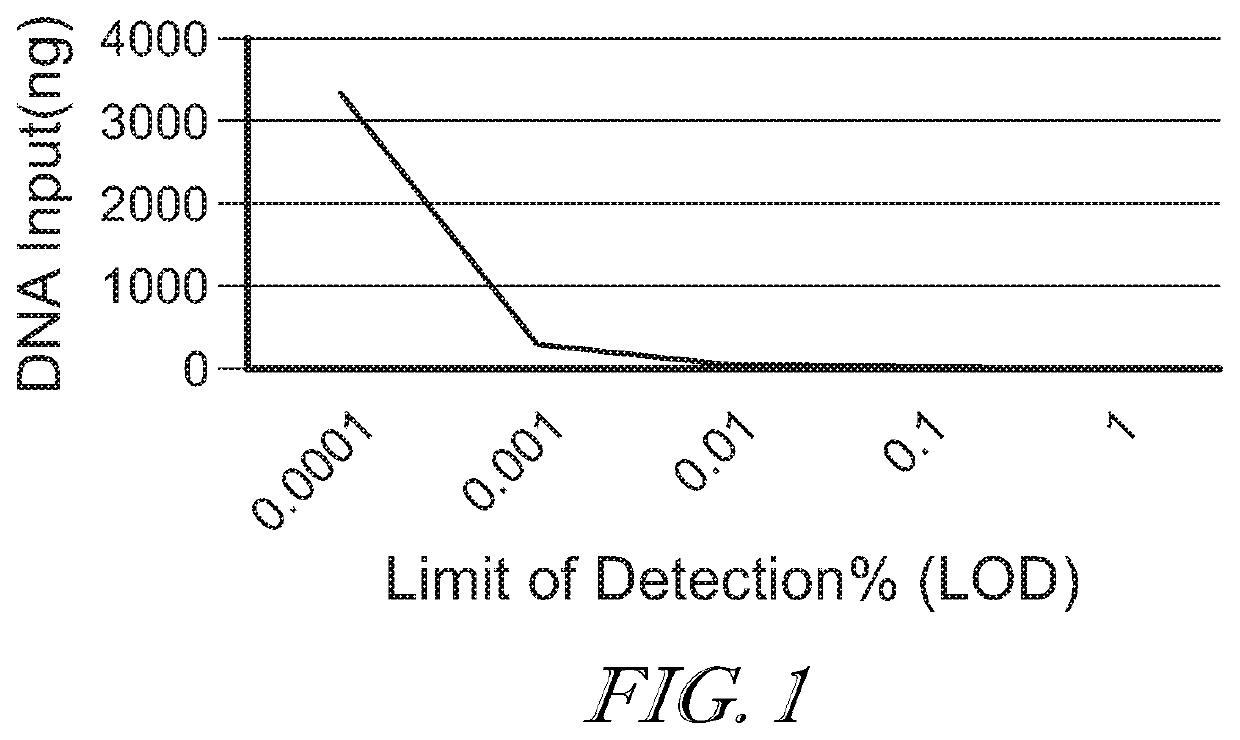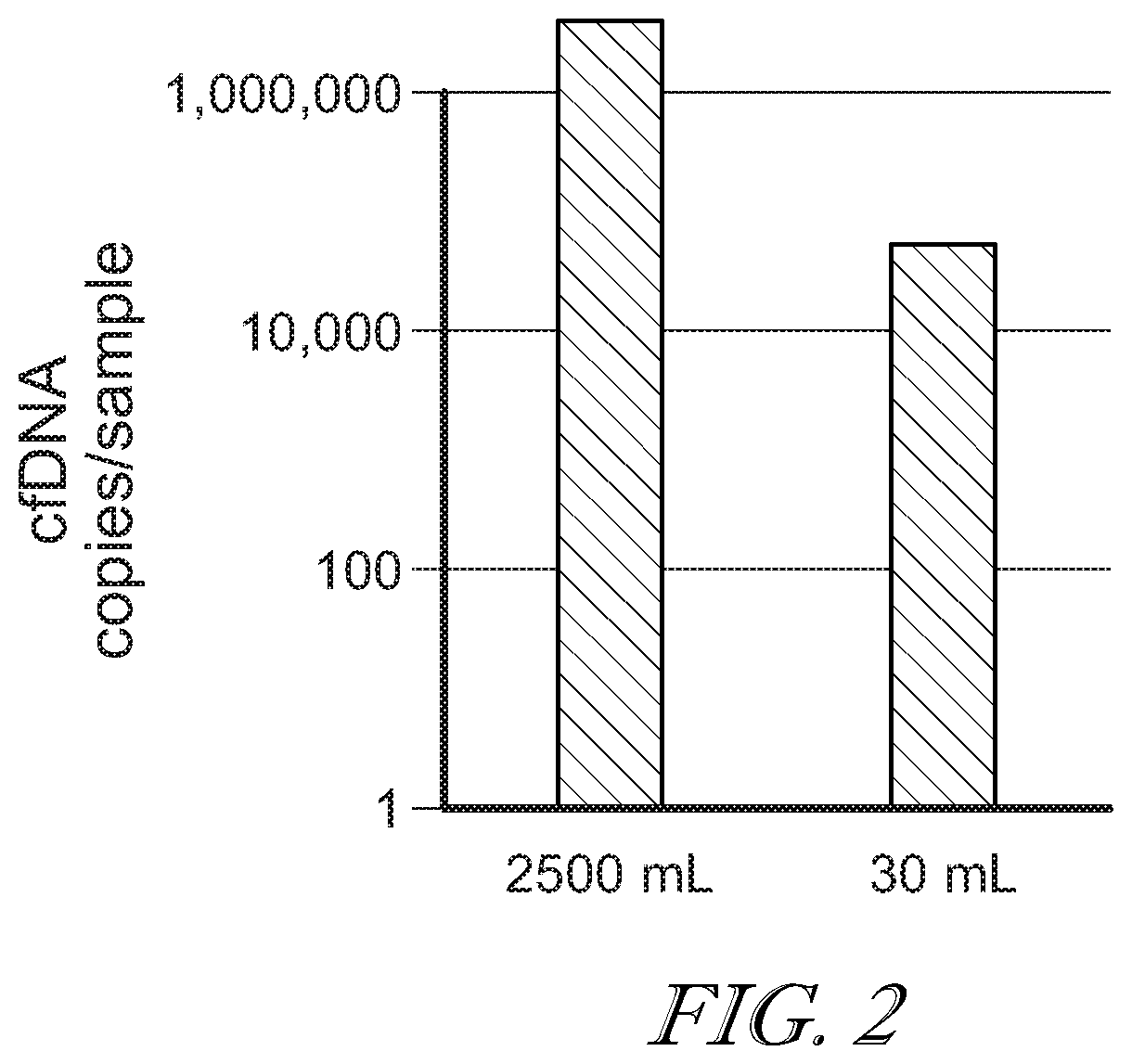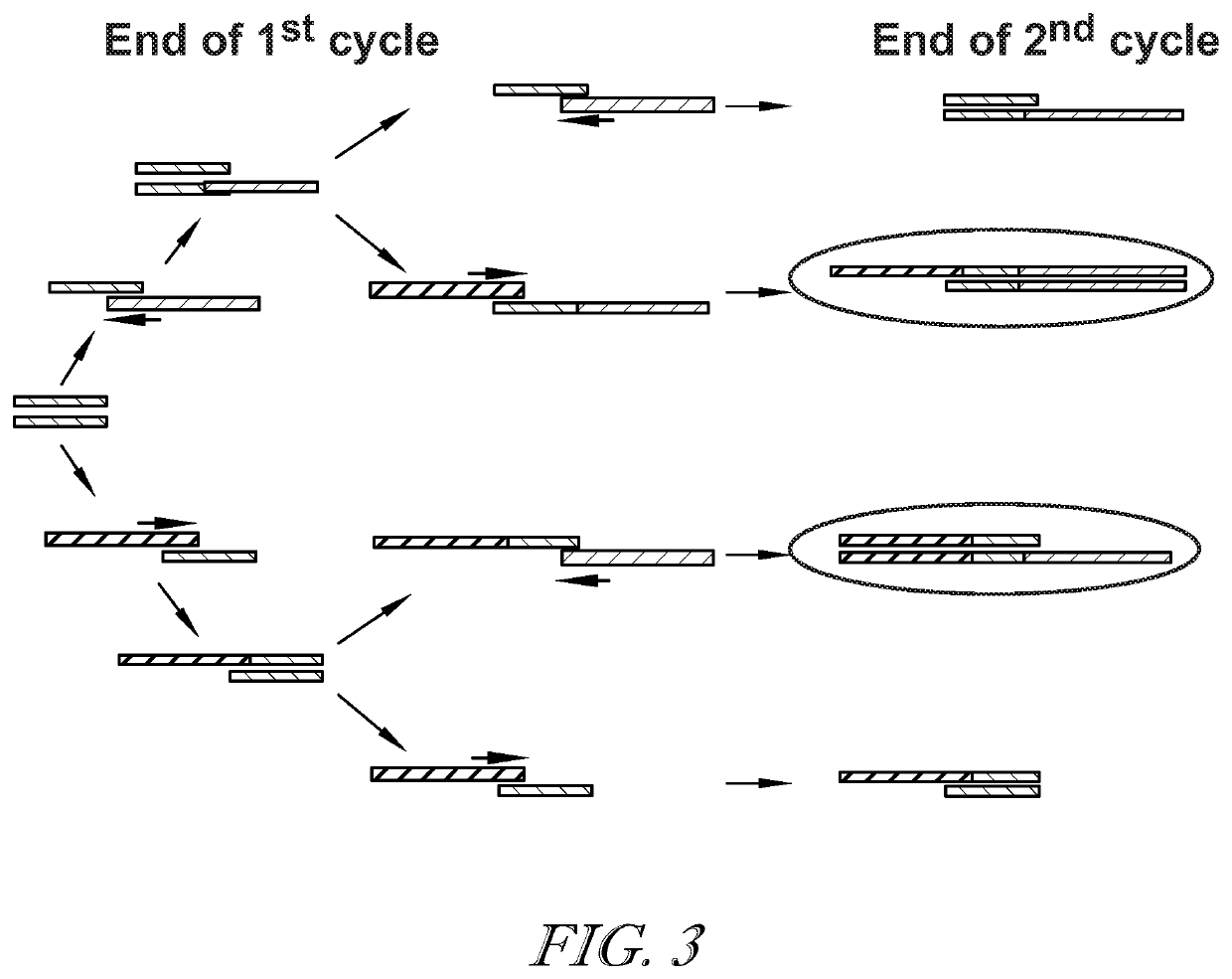Methods of analyzing DNA in urine
a technology of dna and urine, which is applied in the field of methods of extracting dna from urine, can solve the problems of limited sensitivity of current ctdna assays, limiting the usefulness of ctdna testing for molecular characterization of tumors, and unable to quantify mutations in small 30-60 bp dna fragments that are not easily quantifiable using previous ctdna assays,
- Summary
- Abstract
- Description
- Claims
- Application Information
AI Technical Summary
Benefits of technology
Problems solved by technology
Method used
Image
Examples
example 1
Recovery of Large Amounts of DNA from Large Volumes of Urine Improve ctDNA Assay Sensitivity
[0084]Analysis of large volumes of urine is challenging because of the lack of appropriate commercial DNA extraction solutions. As DNA extraction introduces small amounts of PCR inhibitors one cannot simply subdivide a large urine sample into 100 small ones and use routine extraction methods. The data suggest that crossflow (or tangential flow) diafiltration using polyethersulfone (PES) membranes (e.g., 0.1 m2 surface, ‘5 kDa’ pore size, Sartorius, Germany) are suitable to simultaneously concentrate and diafilter up to 3000 mL urine down to a few mL, which can then be extracted using standard commercial DNA extraction kits (Norgen, Canada). In one example, a 77-fold ddPCR signal increase was observed when comparing 2500 mL (using PES membrane diafiltration prior to DNA extraction) vs. 30 mL of the same urine, while an 83-fold signal increase was theoretically possible based on volume ratio (9...
example 2
Novel Method to Elongate Small DNA Fragments for use in Standard ctDNA Mutation Quantifying Assays
[0085]Fragment length distribution analysis of fetal transrenal DNA suggests that there are 10 to 100 times more transrenal DNA molecules of 30-60 base pair (bp) length than there are of those of 100 bp length. However, mutations in small (e.g., 30-60 bp) DNA fragments are not easily quantifiable using standard methods. Fragments below 60 bp cannot be detected with a typical probe based ddPCR mutation assay and are not suitable for routine ctDNA NGS assays. Fragments over 100 bp can be reliably detected using a 100 bp ddPCR assay and are suitable for NGS studies. The efficiency of DNA fragment detection between ˜60 and ˜90 bp is assay specific but typically low. The potential signal gain that can be achieved by quantifying mutations in DNA fragments 30-60 bp can be estimated as the ratio of the amount of ctDNA from 30 to 60 bp in length over the amount of longer ctDNAs. Based on fetal t...
example 3
Two-Pronged Approach to Increase the Sensitivity of Urine-Based ctDNA Detection
[0086]Matched blood and urine samples were analyzed to determine the potential overall signal gain when combining both approaches: (a) 24 hour / 3 L urine vs. one time 10 mL blood collection and b) using short DNA fragment (e.g., 30-60 bp) mutation analysis vs. standard length DNA fragment (e.g., 100-200 bp) mutation analysis alone. The data suggest that analysis of 24-hour urine using our short DNA fragment assay could produce a >500-fold signal gain over a standard mutation assay analyzing 10 mL blood (FIG. 6).
PUM
| Property | Measurement | Unit |
|---|---|---|
| volumes | aaaaa | aaaaa |
| volumes | aaaaa | aaaaa |
| time | aaaaa | aaaaa |
Abstract
Description
Claims
Application Information
 Login to View More
Login to View More - R&D
- Intellectual Property
- Life Sciences
- Materials
- Tech Scout
- Unparalleled Data Quality
- Higher Quality Content
- 60% Fewer Hallucinations
Browse by: Latest US Patents, China's latest patents, Technical Efficacy Thesaurus, Application Domain, Technology Topic, Popular Technical Reports.
© 2025 PatSnap. All rights reserved.Legal|Privacy policy|Modern Slavery Act Transparency Statement|Sitemap|About US| Contact US: help@patsnap.com



